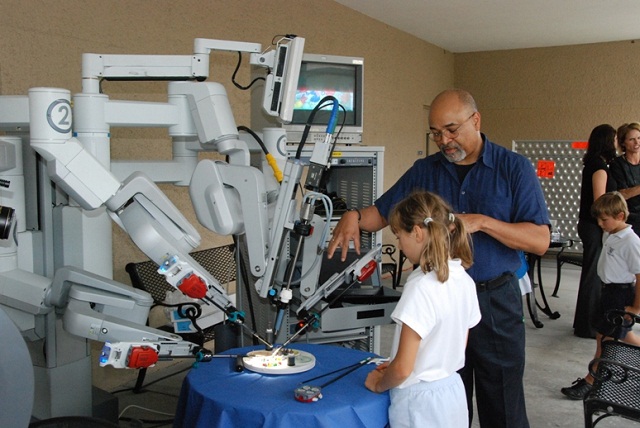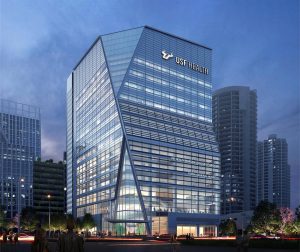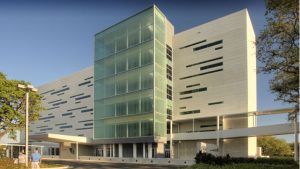USF Health, always an industry pioneer, made history in late 2012. Using the minimally invasive and highly effective robotic da Vinci Surgical System, Dr. Michael Albrink, a USF general surgeon, performed the first laparoscopic cholecystectomy, or gallbladder removal, breaking new ground in medical robotics and reinforcing USF Health’s established commitment to innovative and exemplary patient care.
Enter the Da Vinci Surgical System
The cutting-edge da Vinci Surgical System, approved by the FDA in December 2011, offers a single-site, computer-assisted surgical technique that vastly improves upon traditional surgical procedure. Situated at a console before two high-definition cameras that create a 3-D color image visible through high-resolution lenses, a surgeon using the da Vinci system manipulates articulated and extremely sensitive instruments without ever touching the patient directly.
During a standard surgery, surgeons use counter-intuitive manual equipment that moves “backwards” and necessitates miniscule hand and wrist motions, which can cause cramping and tremors. The da Vinci system also responds to a surgeon’s hand movements, yet a more natural range of motion controls smaller and more sensitive instruments.
The instruments’ “jaws,” or hinges, are no bigger than a fingernail and allow the robotic “digits” to bend, flex and twist while mirroring the surgeon’s own hand movements via the robot-slave design. The da Vinci system is also capable of distinguishing between hand tremors and deliberate motion, all of which facilitate significantly more precise and less invasive incisions.
Making Surgery Safer and Less Painful
Throughout the procedure, the surgeon remains before the three-dimensional image, magnified up to 12 times. The enhanced vision makes minute blood vessel or tissue tears easier to identify, and the sensitive instruments speed treatment. Rather than standing in one place for long periods of time, the surgeon remains comfortably seated at the console, less likely to experience fatigue and make fatigue-related errors.
Patients who undergo robotic laparoscopies experience many benefits: less blood loss, fewer complications, shorter hospital stays and faster recovery times. Surgeries performed with the da Vinci Surgical System are also reported to be less painful.
A Wide Variety of Uses
Robotic surgery is by no means limited to laparoscopic procedures. The da Vinci Surgical System has been used for hysterectomies, and shortly before Dr. Albrink performed the first robotic laparoscopy, two USF physicians conducted the first robotic cervical-stitch procedure at teaching affiliate Tampa General Hospital. The patient, who had suffered from reproductive issues for years prior, safely delivered a healthy infant several months later.
The Da Vinci Surgery System at USF Health
USF Health currently owns two da Vinci Surgical Systems, and robotic laparoscopies are gaining traction as the contemporary alternative to standard invasive surgeries. Advances in medical technology and equipment like the da Vinci Surgical System potentiate an improved quality of care for every surgery patient at USF Health, and the University and its affiliate hospitals will continue to seek and acquire the latest innovative technologies. Dr. Albrink himself predicts that not only will the da Vinci system have “applicability for all laparoscopic surgeries,” but “all operations may one day be done this way.”



